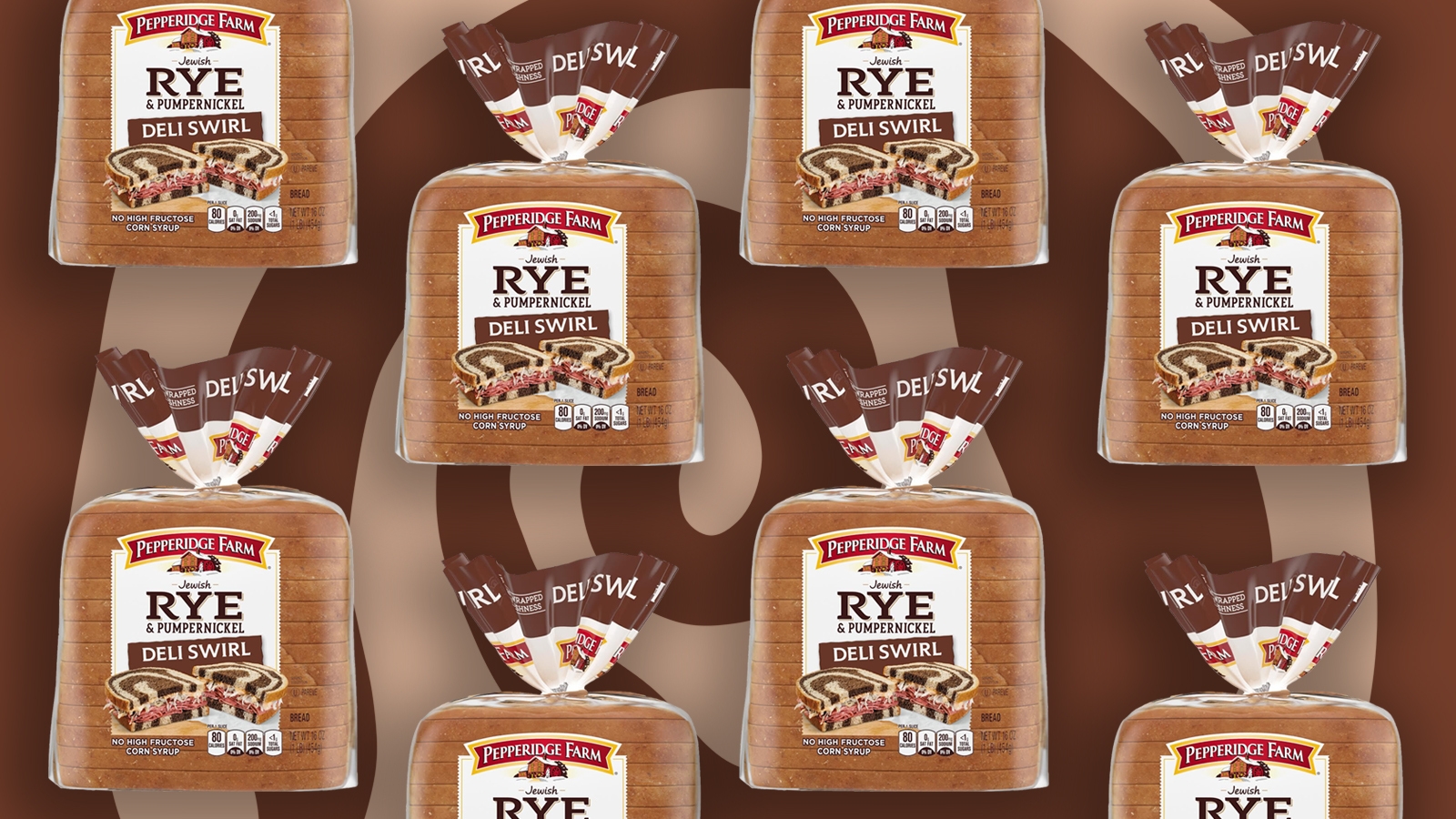Jewish rye “party bread,” once sold seasonally by Pepperidge Farm in the late 1980s early ’90s is most easily remembered by its uniquely small size. The tiny squares offered the perfect base for hors d’oeuvres, while also delivering that signature rye taste. Although Pepperidge Farms no longer vends the mini “party-size” style loaf, the company does still include “Jewish Rye & Pumpernickel Deli Swirl” bread among its regular offerings.
What is noteworthy about this particular item is not so much the novel combination of rye and pumpernickel swirled together, but rather that in the age of politically correct packaging, Pepperidge Farm would continue to explicitly label the bread as “Jewish.” Not that the association (while based on a stereotype) is completely unfounded. During the 19th century, Jewish immigrants from Northern and Eastern Europe, especially those hailing from poor shtetls, brought their familiar style of bread with them. As intrepid baker and culinary historian Amy Emberling of Zingerman’s Bakehouse deftly explains, “the poorer the community, the darker the bread.” The bread of these humble immigrants was often made with mostly rye flour, a little wheat, and maybe some seeds for texture. Many Jews used roshtshine, a sour rye starter as the base for their bread, then glazed the loaves with a mixture of sifted rye flour and water called kharmushke before baking them in the oven. This savory glaze imparted a nutty flavor and gave the rye bread its signature crinkly surface crust.
In the New World, Jews continued to practice these techniques while making bread for their families and then eventually extending production of such loaves as they opened bakeries, delis and factories. Thus, the indelible edible link between Jews and rye bread was forged.
I reached out to the master bakers at Pepperidge Farm to follow the trail of crumbs with regards to the origin of their rye bread. I discovered tear Pepperidge Farm has a long history of offering hearty carbohydrates, because its founder, Margaret Rudkin, was an early adopter of whole-grain baking. In 1926, Rudkin and her husband purchased over 100 acres of land (which they called “Pepperidge Farm” due the pepperidge tree on site), where they raised animals. It was during this time Margaret began experimenting with different types of bread. The story goes that following a conversation with her son’s allergist regarding the healthful benefits of stone-ground wheat flour, she switched to baking exclusively with grain flours, eschewing other more mainstream processed ones. Her baking business developed over the decades into the company we know now as Pepperidge Farm. Rudkin, a seminal American female entrepreneur in her own right, went on to become its leader as well as the first female board member of the Campbell’s Soup corporation following its purchase of Pepperidge Farm in 1961.
The Nosher celebrates the traditions and recipes that have brought Jews together for centuries. Donate today to keep The Nosher's stories and recipes accessible to all.
Although Pepperidge Farm became famous for some of America’s most beloved snacks and confections (e.g., Goldfish crackers, Milano cookies), their bread remains, well, the company’s bread and butter. The rye-pumpernickel hybrid has been part of its carbohydrate clan since 1999, and according to corporate leadership, continues to be specifically labeled as “Jewish” because of its kosher status. It has always been very popular, though in recent years has seen some unprecedented growth in a surprising demographic: millennials! It seems the young folk have become quite smitten with the swirled starch. The bread serves as the accoutrement of choice for traditional Jewish fare like the reuben sandwich and chopped liver; other more novel deployments include French toast and croutons. However you slice it, Pepperidge Farm Jewish rye bread is edible nostalgia and deserves a spot in any kitchen larder.



